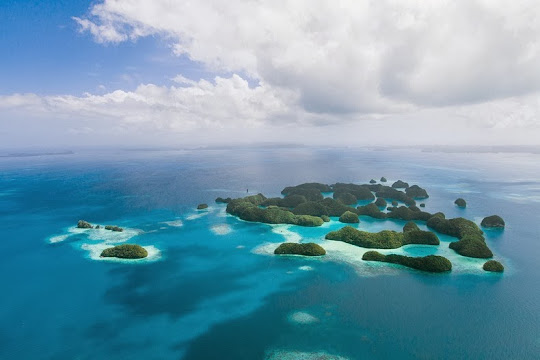Palau is a beautiful tropical paradise, and one of the true unspoiled destinations on the planet. Most of the 100-plus islands are small low-lying coral islands, ringed by barrier reefs and uninhabited. The country's population of around 21,000 is spread across 250 islands forming the western chain of the Caroline Islands.

The most famous of Palau’s sights are the Rock Islands – a group of green islands covered in foliage with a few bright white sandy beaches. Formed by ancient coral reefs, the bases of these limestone formations have been slowly eroded over millennia into quirky mushroom shapes. There are between 250 to 400+ islands in the group, according to different sources, with an aggregate area of 47 square kilometers and a height up to 207 meters.
The islands are for the most part uninhabited and are famous for their beaches, blue lagoons and the peculiar umbrella-like shapes of many of the islands themselves. The Rock Islands and the surrounding reefs make up Palau's popular tourist sites such as Blue Corner, Blue hole, German Channel, Ngermeaus Island and the famed Jellyfish Lake, one of the many Marine lakes in the Rock Islands that provides home and safety for several kinds of stingless jellyfish found only in Palau. It is the most popular dive destination in Palau. In fact, Palau offers some of the best and most diverse dive sites on the planet. From wall diving to high current drift dives, from Manta Rays to sharkfeeds and from shallow and colorful lagoons to brilliantly decorated caves and overhangs.
Although presently uninhabited, the islands were once home to Palauan settlements, and Palauans continue to use the area and its resources for cultural and recreational purposes. The islands contain a significant set of cultural remains relating to an occupation over some five thousand years that ended in abandonment. Archaeological remains of former human occupation in caves and villages, including rock art and burials, testifies to seasonal human occupation and use of the marine ecosystem, dating back to 3,100 BC and extending over some 2,500 years.

















Source
